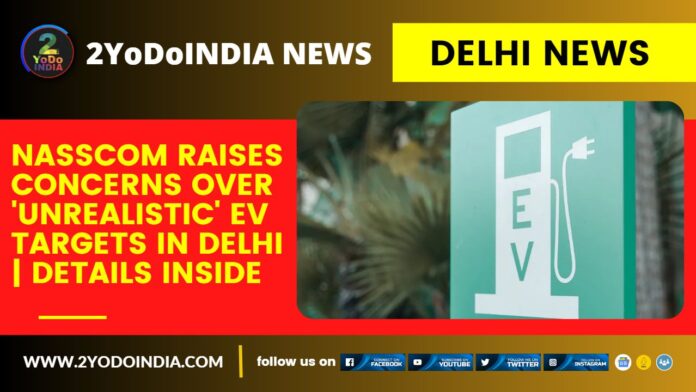Nasscom has raises concerns over “unrealistic electrification targets” for EVs in the national capital citing supply constraints, inadequate charging infrastructure, and challenges ahead for cab drivers in its submissions on Delhi Motor Vehicle Aggregator and Delivery Service Provider Scheme.
Nasscom highlighted that only 0.16% of the total vehicle in use in Delhi are currently EVs, as it point to the vast difference in electrification targets and current realities.
As per Nasscom :
“In its observations, Nasscom raises concerns about the unrealistic electrification targets for EVs in the capital, citing supply constraints, inadequate charging infrastructure, high entry costs, and challenges ahead for the cab drivers,”.
The note said the current share of EVs in Delhi is a mere 0.74%, 30.3%, and 0.16% for two, three, and four-wheeler vehicles, respectively.
Nasscom said that Delhi’s electrification targets will negatively impact the mobility of people in the national capital region.
As per Nasscom :
“Even for the EVs that are available for commercial use, the range offered is not viable for ridesharing as there is a need for a 100 km plus range to be economically viable,”.
In addition, charging infrastructure is inadequate, as many charging stations set up in NCT do not work properly and are too crowd during peak travel hours, Nasscom said.
Also, they are not available in all areas, which requires drivers to take long detours to charge their vehicles.
The cost of acquiring EVs is also considerably higher compare to Internal Combustion Engine (ICE) counterparts as the industry data suggest that for goods and passenger mobility vehicles, two-wheeler EV models are about 25% more expensive, three-wheeler EV models are about 40% more expensive and four-wheeler EV models are about 60% more expensive than their ICE counterparts.
Nasscom’s note also mentions the case of bike taxis in Delhi, which are currently ban by the state government.
As per the propose aggregator guidelines, the transition from ICE motorbikes to two-wheeler EVs is immediate with aggregators needing to onboard 100% EVs from the date of notification.
Nasscom emphasis the need to relook at these targets, given that only 0.74% of all two-wheelers in Delhi are EVs today.
Nasscom said most 2-wheeler EVs available are scooters and not motorcycles, which are the prefer form factor for bike taxi operators.
The note suggests that the onboarding targets of EVs must be revise and reflective of the EV ecosystem in the NCT.
Electrification should be carried out in a phase manner, Nasscom said.
Nasscom underscore the need to create a working group of aggregators and delivery service providers to work with the Delhi government for electrification.
Raising concerns over the financial hurdles, the note states that the per-vehicle license fee under the propose scheme is exceptionally high.
The document emphasis the need for a realistic approach and collaboration with stakeholders to address the ground realities and challenges, hindering EV adoption and offering flexibility to gig workers in Delhi through this policy.





